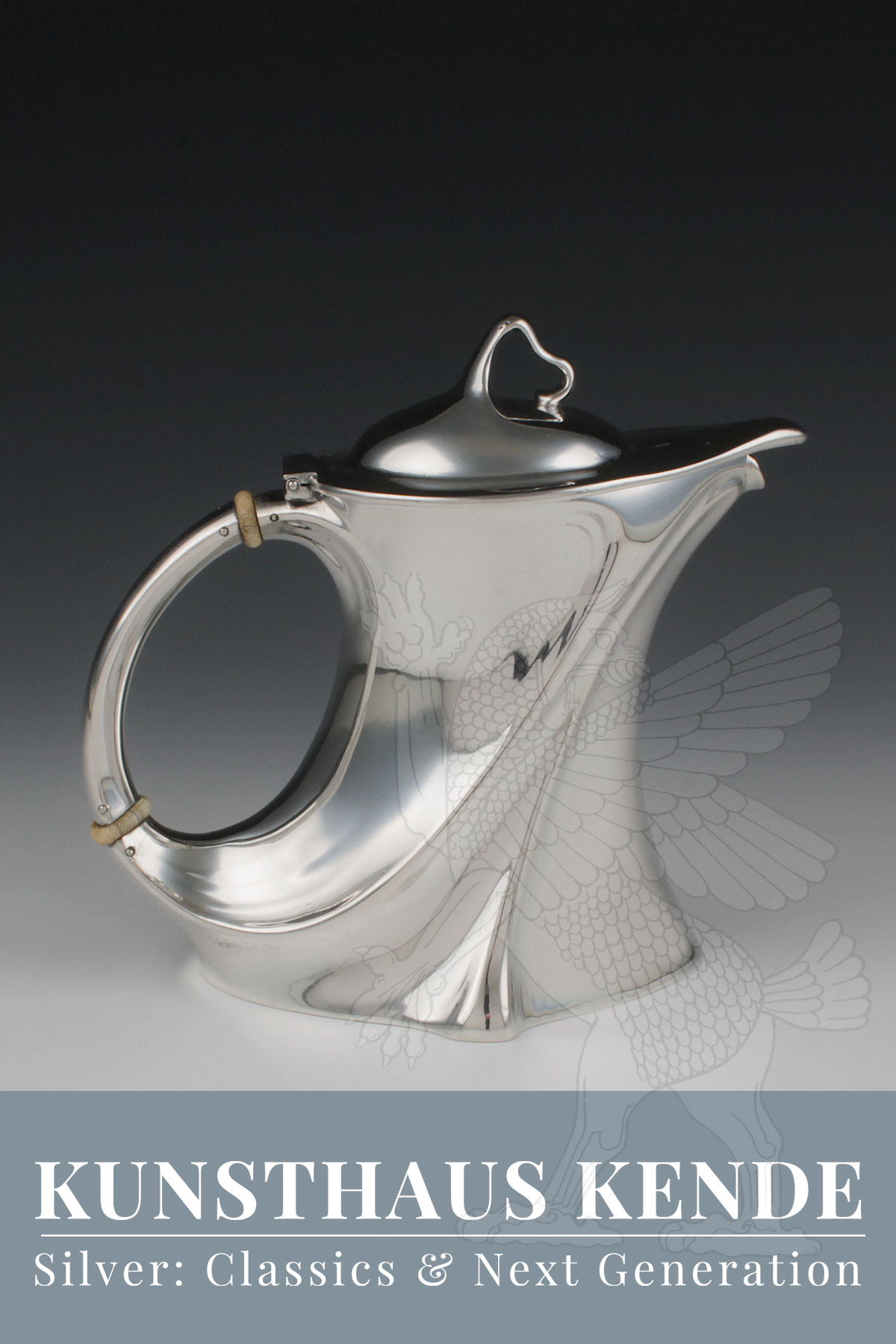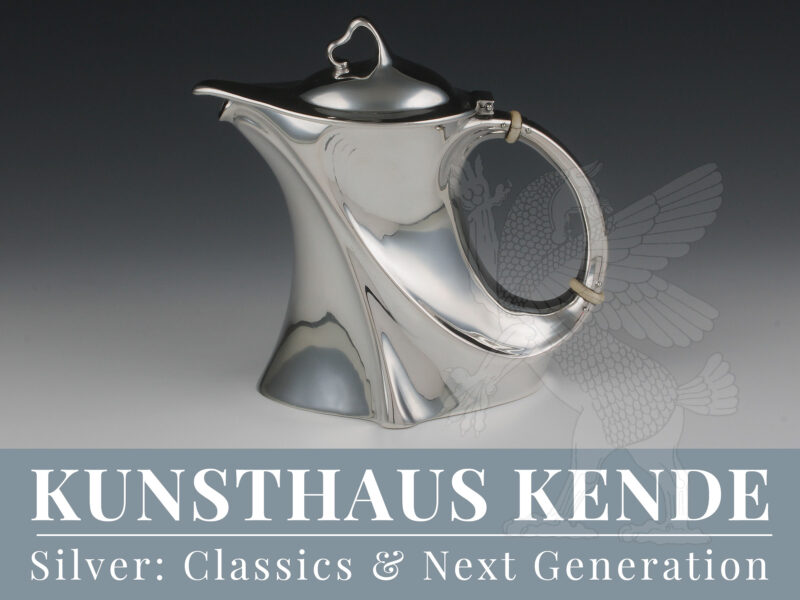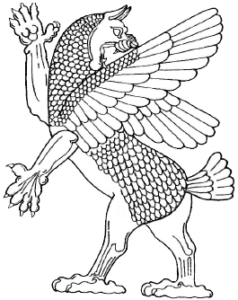Item number: 60116
A rare 800 grade silver teapot,
Vienna circa 1900 by Eduard Friedmann
The elongated body decorated all over with ornamental folds, which include the handle and the spout. The pointed lid is crowned by a correspondingly designed knob.
An exceptional and elegant Viennese Art Nouveau teapot whose special charm lies in its strongly dynamic design. The slant of the upper rim further intensifies the dynamism of the design and gives it a sculptural appearance.
17.4 cm / 6.85″ length, 10.5 cm / 4.13″ width, 15.9 cm / 6.25″ height; 401.9 g / 12.92 oz
Approx. 0.56 ltr. capacity
The shape is possibly based on a design by the Austrian sculptor Franz Barwig (1868 – 1931).
The Viennese Silverware Factory Eduard Friedmann
Founded in 1877, the Eduard Friedmann silverware factory received its trade licence in 1881. The increasing expansion of the company necessitated several relocations, the last of which was to Gumpendorferstrasse 130 in 1903, where it employed 36 workers in 1914. In the same year, the silverware factory was granted the privilege of using the imperial eagle in its shield and seal. Eduard Friedmann quickly achieved fame beyond the country’s borders with his artistically sophisticated designs and high-quality workmanship and the silverware factory exported its work to Germany, Russia, Spain and Italy, among other countries. In addition to Hans Bolek, Eduard Friedmann also executed designs by Otto Prutscher, Emanuel Josef Margold, Milla Weltmann and Alfred Pollak, which brought international attention to the company. The silverware factory also gained further notoriety through regular exhibitions of Austrian decorative arts at the Austrian Museum of Art and Industry (now the Museum of Applied Arts, MAK), as well as the Hunting Exhibition in Vienna (1910). In 1920, the Eduard Friedmann silverware factory was closed.





